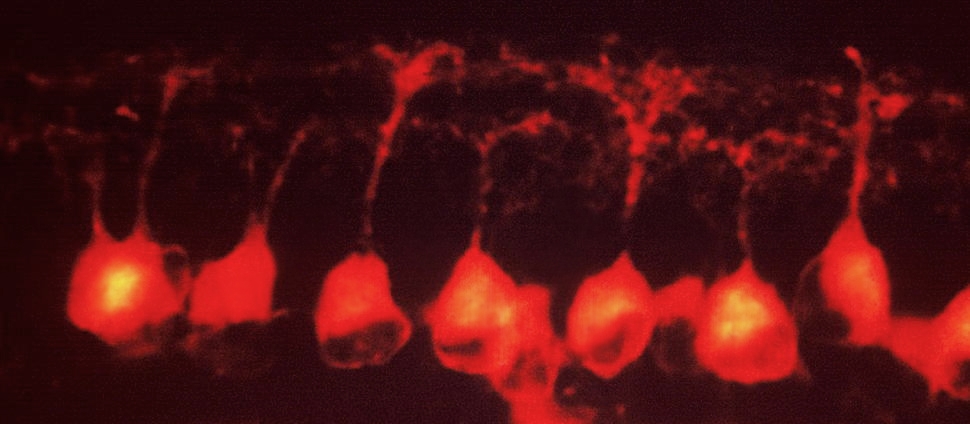The Homodimeric Kinesin, Kif17, is Essential for Vertebrate Photoreceptor Sensory Outer Segment Development
Archived as published. Open access article.
Abstract
Sensory cilia and intraflagellar transport (IFT), a pathway essential for ciliogenesis, play important roles in embryonic development and cell differentiation. In vertebrate photoreceptors IFT is required for the early development of ciliated sensory outer segments (OS), an elaborate organelle that sequesters the many proteins comprising the phototransduction machinery. As in other cilia and flagella, heterotrimeric members of the kinesin 2 family have been implicated as the anterograde IFT motor in OS. However, in Caenorhabditis elegans, OSM-3, a homodimeric kinesin 2 motor, plays an essential role in some, but not all sensory cilia. Kif17, a vertebrate OSM-3 homologue, is known for its role in dendritic trafficking in neurons, but a function in ciliogenesis has not been determined. We show that in zebrafish Kif17 is widely expressed in the nervous system and retina. In photoreceptors Kif17 co-localizes with IFT proteins within the OS, and co-immunoprecipitates with IFT proteins. Knockdown of Kif17 has little if any effect in early embryogenesis, including the formation of motile sensory cilia in the pronephros. However, OS formation and targeting of the visual pigment protein is severely disrupted. Our analysis shows that Kif17 is essential for photoreceptor OS development, and suggests that Kif17 plays a cell type specific role in vertebrate ciliogenesis. © 2008 Elsevier Inc. All rights reserved.


